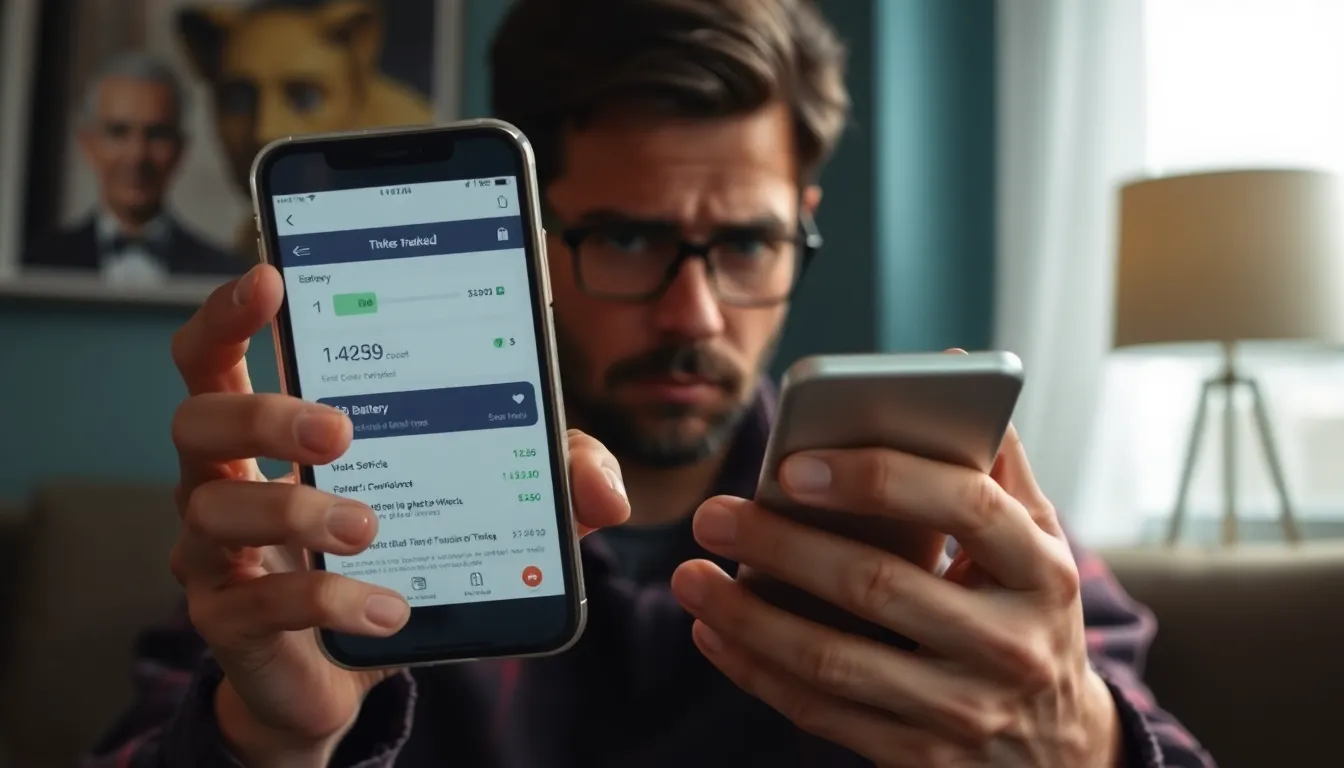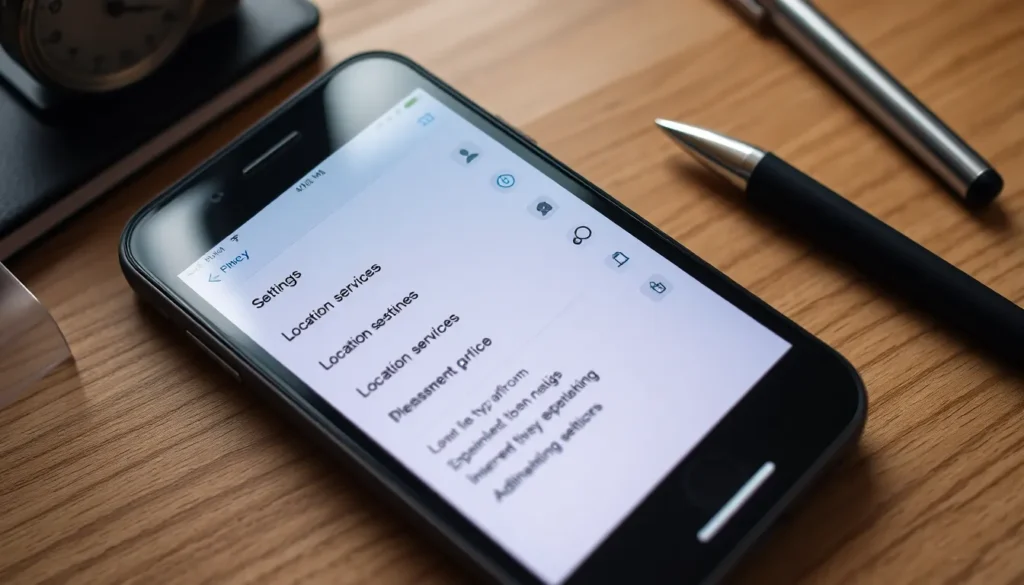Table of Contents
ToggleIn a world where privacy feels like a luxury, it’s crucial to know if your iPhone is being tracked. Imagine someone peeking over your shoulder while you’re texting your best friend about that embarrassing moment at the coffee shop. Yikes! Knowing how to spot those sneaky trackers can save you from unwelcome surprises.
Understanding iPhone Tracking
Many users face concerns about their iPhones being tracked. Various methods can lead to unauthorized tracking, making awareness essential. Identifying these methods allows individuals to take steps for protection.
Firstly, look for unusual battery drain. Tracking apps often consume significant battery power, resulting in a noticeable reduction in battery life. Regularly monitoring battery usage can reveal any unfamiliar applications.
Next, check for unusual data usage. If data consumption appears higher than expected, a tracking app might be in operation. Users should examine their cellular data usage in the settings to identify any suspicious spikes.
Another indicator involves location settings. Keep track of location services accessed by apps. If non-essential apps have permission to access location data, it may signal potential tracking.
Notifications can also provide insights. Pay attention to alerts or unusual behavior from the device. Unexpected notifications from apps might indicate tampering or tracking.
Additionally, review installed apps. An unknown app can pose a threat. Regularly auditing the apps present on the device helps users identify any that seem suspicious.
Regularly updating the iPhone is crucial. Software updates often contain security patches that help prevent unauthorized access. Installing updates promptly reduces the risk of tracking or hacking efforts.
Lastly, utilize privacy settings. Activating features such as “Find My iPhone” can provide alerts in case of suspicious activity. Familiarizing oneself with privacy controls ensures better protection against tracking attempts.
Common Signs of Tracking

Detecting tracking on an iPhone involves observing specific signs that indicate unauthorized access. Users must remain aware of these potential red flags.
Unusual Battery Drain
Tracking applications often run continuously, leading to a significant decrease in battery life. Users should notice if the battery depletes much faster than usual. Frequent charging may indicate a hidden issue with the device. Monitoring battery usage statistics can reveal apps that consume excessive power. Identifying any unfamiliar apps contributing to battery drain can help in isolating tracking software. If unusual activity persists, further investigation is necessary.
Unexpected Data Usage
Monitoring data usage is crucial for identifying possible tracking. An increase in mobile data consumption can signal unauthorized tracking apps. Users must check their usage details regularly to spot unexpected spikes. Frequent data transfers may occur even when the phone isn’t in active use. Investigating background data activity can pinpoint suspicious applications. Understanding data usage trends helps in maintaining control over device privacy. If users find particular apps using more data than expected, further scrutiny is warranted.
How to Check for Tracking Apps
Identifying tracking apps on an iPhone requires a systematic approach. Users must prioritize certain steps to ensure thorough checks.
Reviewing Installed Applications
Start by accessing the iPhone’s home screen. Tap on the App Store, then select your profile icon. Review the list of downloaded applications carefully. Unknown or suspicious apps warrant immediate investigation. Check the permissions these apps request, particularly those that shouldn’t need access to personal data. Delete any applications that seem irrelevant or unrecognized. Keeping the iPhone clutter-free reduces the risk of malicious software. Regular checks maintain device security and enhance privacy.
Checking Location Services
Open the Settings app to access location services. Tap on Privacy & Security, then select Location Services. Review the list of apps with location access. Only essential apps should have this permission. Pay attention to apps that track location while not in use; they can continuously gather data. Disable location access for apps that don’t require it. Enabling “Share My Location” can help track where the device is at all times. Regular audits of location settings help safeguard personal information.
Privacy Settings to Consider
Privacy on an iPhone requires careful management of settings. Users can take steps to enhance their security and minimize tracking risks.
Enabling Location Alerts
Enabling location alerts can help users stay informed about app activity. Notifications trigger when apps access location services in the background. Regularly checking these alerts enables users to identify unfamiliar access requests. Users can customize location permissions by going to the Settings app. Under Privacy, they can view which apps have location access and adjust permissions accordingly. When location services seem excessive, users should consider disabling them for unnecessary apps to enhance privacy.
Reviewing Privacy Permissions
Reviewing privacy permissions is vital for maintaining control over personal data. Users can start by navigating to the Settings app and selecting Privacy. Each app should be assessed for the permissions it requests, such as access to contacts, camera, or microphone. Noticing apps with extensive permissions not needed for their functionality warrants investigation. Users can revoke permissions for apps that seem overly invasive or redundant. Regular audits of these settings promote better understanding and management of privacy on the device.
Staying aware of potential tracking threats on an iPhone is essential for maintaining privacy. By recognizing signs like unusual battery drain and unexpected data usage users can take proactive steps to protect their personal information. Regular audits of installed apps and location settings play a crucial role in identifying unauthorized access.
Implementing privacy settings and enabling location alerts further enhances security against tracking attempts. With these strategies in place users can enjoy their devices with greater confidence knowing they’ve taken the necessary precautions to safeguard their privacy.




